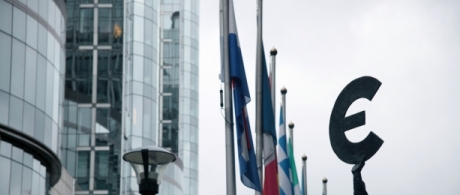The CER was born in optimistic times. It seemed that the European Union, by completing the European single market, could deliver increased prosperity. The EU seemed to underpin peace in a once war-torn continent. And membership was the vital aspiration of Eastern European countries freed from Soviet domination. Even within a British political culture ever wary of grand visions, many saw noble purpose in the European project.

In one crucial way the hopes of 1995 have been achieved, with 11 countries of Eastern Europe
now peaceful, democratic members of a united Europe. There must still be much good in a
Union so many have wished to join, and which others still aspire to. But the optimism of the
1990s is gone. Europe is mired in low growth, and beset with increasing political tensions.
Few in Britain now talk of the EU’s noble purpose without fear of derision.
Economic and Monetary Union (EMU) obviously played an important role in creating today’s tensions. Many people close to the CER, myself included, initially supported that project. We must understand what went wrong. Paradoxically, the problems derived both from too much grand political vision and too much faith in free markets.
The euro was in part a political project, a ‘next step’ in the creation of an ever closer Europe, justified at times by economically meaningless rhetoric about the need to ‘stand up to the dollar’ or contain the Bundesbank’s power. But EMU also seemed justified as an impeccably free-market project, driving forward completion of the single market and supporting in particular the free flow of capital. The European Commission confidently asserted in its 1991 report ‘One market, one money’, that the single currency, by eliminating exchange rate risk, would unleash capital flows across the currency union, allocating capital efficiently to the highest-return projects, and driving faster convergence in productivity and income levels.
Part of that story certainly came true: we saw hugely increased capital flows, the flipside of massive current account surpluses and deficits. But far from fostering the efficient capital investment which free market theory predicted, these flows supported wasteful real estate investment in Spain and Ireland, and unsustainable public deficits in Greece. Just as in the US’s subprime mortgage boom, more complete financial markets produced inefficient capital allocation and left economies facing severe debt overhangs after the bubble burst in 2008.
So the eurozone crisis is in part rooted in the same hubris which gave us the global financial crisis. Before 2008, too many economists were confident that financial market liberalisation was bound to deliver microeconomic efficiency. They also believed that macroeconomic stability was assured as long as central banks delivered low and stable inflation. Robert Lucas, the doyen of new classical economics, even claimed that the essential problem of macroeconomics – how to prevent major recessions – had been definitively solved.
Both beliefs were wrong. Free financial markets can allocate capital inefficiently and can cause massive financial instability: they have left US GDP more than 10 per cent smaller than it would have been had it grown in line with its pre-crisis trend, and the eurozone still below its 2007 level. But while the path to disaster in both economies lay in the same free-market excess, the eurozone’s route out of it has proved far more difficult because of its flawed political structure.
With one government and one central bank, it is politically easy to use large public deficits to offset private sector deleveraging, and to use quantitative easing to avoid public borrowing crowding out private. If needed, it is possible to go even further and permanently monetise government debt, as Japan undoubtedly will. But in the eurozone, where there are multiple national debt issuers, distributional disputes make it difficult and perhaps impossible to deal with the problems which inadequately controlled finance has left behind.
Those of us in Britain who supported the EMU were therefore doubly wrong – both in our failure to foresee the risks as well as the potential benefits of financial market completion, and in our assumption that the problems of macroeconomics had indeed been solved, allowing us to safely ignore the obvious deficiencies of the eurozone’s political structure.
The eurozone now faces a chronic problem of deficient demand, to which the ECB’s quantitative easing programme will be only a partially effective response. Without progress to a more complete economic union, with some federalisation of public debt, and some write-off or monetisation of existing debt, the currency union risks another lost decade of weak growth and low inflation. This would mirror Japan’s experience in the 1990s and 2000s, but with far worse potential social and political consequences than in that ethnically and culturally homogeneous nation. If such progress is politically unachievable, a controlled breakup of the eurozone might be the better – though still risky – path forward.
In 1995, the year of the CER’s conception, many of us saw market integration as the route to economic efficiency, while some European elites believed currency union a desirable political project in itself, independent of its concrete economic implications. The subsequent years have taught us painful lessons. Future policy needs to be based on a more realistic assessment of both market and political imperfections, if we are to preserve what is truly valuable and noble in the European project: a shared commitment to peace, co-operation, democracy and liberty.
Adair Turner
Former chairman, Financial Services Authority
sourche: http://www.cer.org.uk/sites/default/files/publications/attachments/pdf/2015/bulletin_100_at_article3-10514.pdf
Δεν υπάρχουν σχόλια:
Δημοσίευση σχολίου